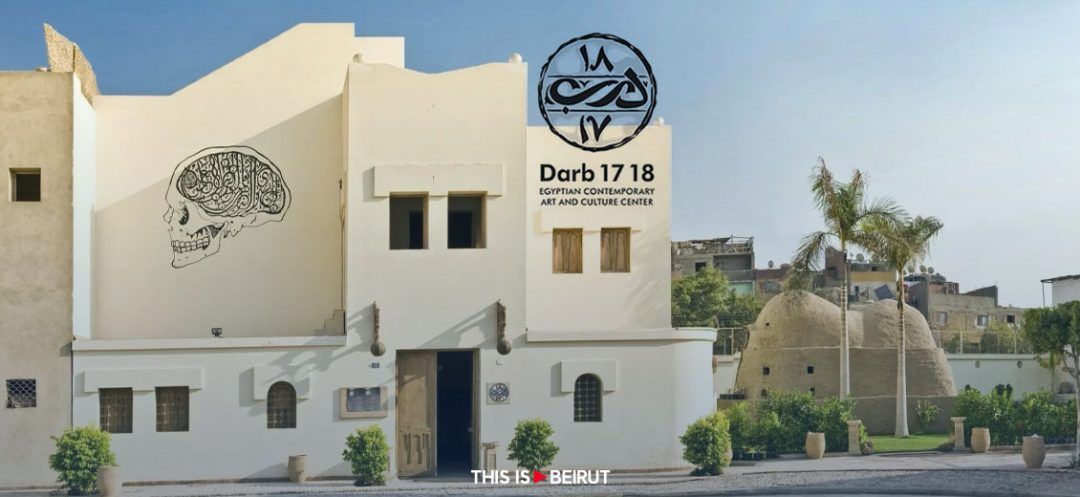
In the heart of historic Cairo, the renowned Darb 1718 cultural center, a beacon of the city’s vibrant art scene, has been reduced to rubble. This latest demolition, part of a series of contentious development projects, signals a dramatic transformation of Egypt’s capital, home to over 20 million people.
On January 6, the Darb 1718 center, a name symbolizing resistance originating from the 1977 bread riots, faced an unannounced demolition to make room for an expansive highway project. For over a decade and a half, the center has been a sanctuary for artists and art lovers, fostering cultural exchanges and creativity. The center’s management took to social media to express their grief and outrage, posting images of the destruction in progress, highlighting the ongoing disregard for Cairo’s rich cultural heritage and the displacement of its communities.
Modernization at the cost of heritage
President Abdel Fattah al-Sisi’s government, in power since 2013, has been at the forefront of remaking parts of Cairo. This drive for modernization, integral to Sisi’s policy, aims at reinventing the Egyptian capital amidst a severe economic crisis. The strategy involves constructing new roads, bridges and business districts, lending a contemporary sheen to the ancient city. However, this pursuit of modernity has come at a significant cultural cost, as seen in the fate of Darb 1718 and other historic sites, including parts of the UNESCO-listed City of the Dead.
Reactions and resistance
The demolition sparked immediate reactions from the art community and beyond. Moataz Naserddine, the founder of Darb 1718, recounted his disbelief and sorrow on one of Egypt’s most-watched talk shows. The loss extended beyond the physical structure, as valuable artworks, including those of 150 foreign artists, were destroyed. This event drew criticism even from pro-government media figures. Television host Lamiss Hadidi openly questioned the juxtaposition of Egypt’s cultural policies, which undermine its own heritage while seeking international recognition through candidacies like Khaled el-Enany’s for the UNESCO chief position.
Architect Ayman Badr, who regularly visited the center, shared his mixed feelings of frustration, anger and sadness. Darb 1718 was more than an art center; it was a community hub that deeply influenced the neighborhood and its younger generation. The shock of its destruction resonates with many who saw Darb 1718 as a symbol of Cairo’s cultural identity.
In anticipation of potential threats, Naserddine had initiated a petition to save the center, garnering over 16,000 signatures and assurances of negotiation from the district mayor post-presidential elections. However, these efforts proved futile as the center was demolished soon after the elections, assuring President Sisi’s leadership until 2030.
A city’s identity in flux
The razing of Darb 1718 marks a significant chapter in Cairo’s ongoing transformation. As the government strides toward modernity and economic development, the cultural cost becomes increasingly evident. The demolition not only represents the physical loss of a historic site but also signifies a shift in the cultural dynamics of a city that has long been revered as a crucible of Arab art and history. The incident raises critical questions about the balance between development and preservation, and the role of cultural institutions in a rapidly changing urban landscape.
In the wake of the demolition, discussions have intensified among urban planners, historians and residents about the future of Cairo’s cultural identity. The debate centers on how to accommodate the needs of a growing city while safeguarding its historical and cultural legacy. The fate of Darb 1718 has become a rallying point for those concerned about the preservation of Cairo’s unique character amidst the push for modern infrastructure.
Looking ahead: Challenges and opportunities
The challenge now facing Cairo and indeed many historic cities around the world is how to embrace progress without erasing the past. The loss of Darb 1718 underscores the need for a more inclusive approach to urban development, one that involves artists, historians and the community in decision-making processes.
As Cairo continues to evolve, the hope among many is that new spaces for art and culture will emerge, reflecting both the city’s rich heritage and its contemporary aspirations. The story of Darb 1718, though ending in demolition, may inspire a new chapter in Cairo’s long history, where art and progress coexist, and where the voices of those who cherish the city’s cultural soul are heard and valued.
The destruction of Darb 1718 is not just a loss for Cairo but a reminder to cities worldwide of the delicate interplay between development and heritage. It underscores the importance of preserving cultural landmarks that embody the spirit and history of a place. As Cairo looks to the future, the memory of Darb 1718 will stand as a testament to the enduring power of art and community in the face of relentless change.
With AFP
Read more



Comments